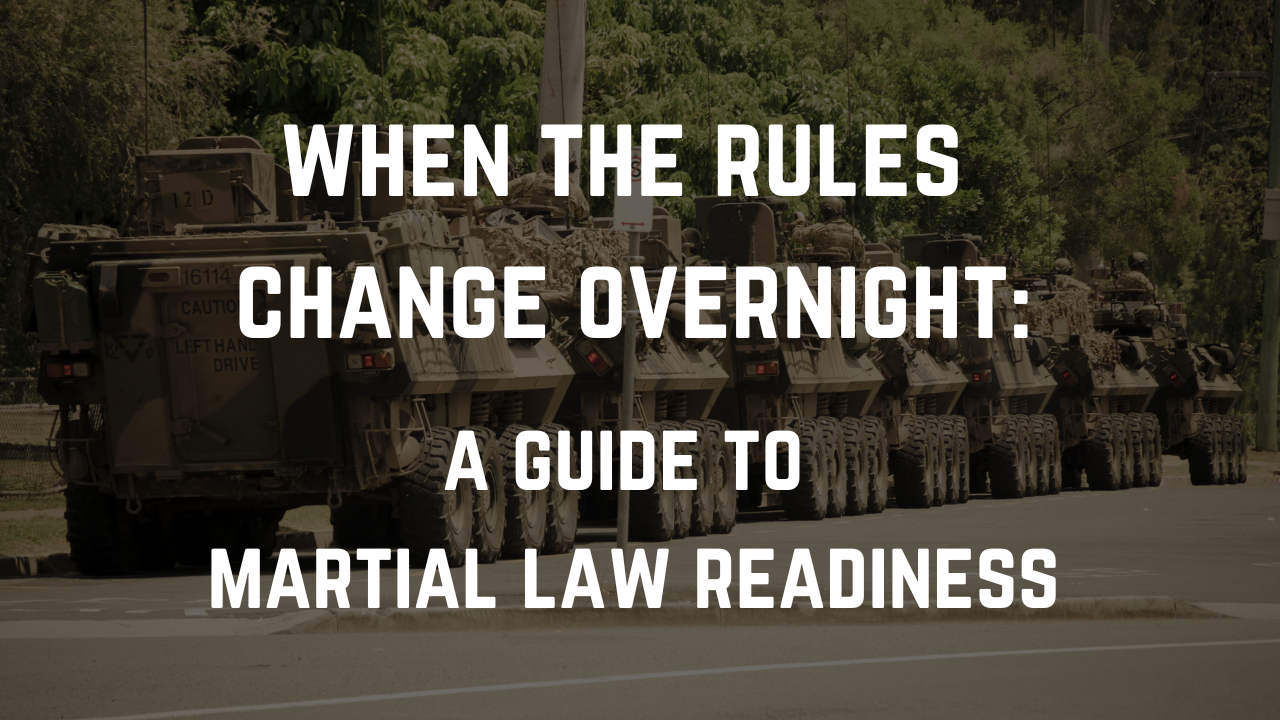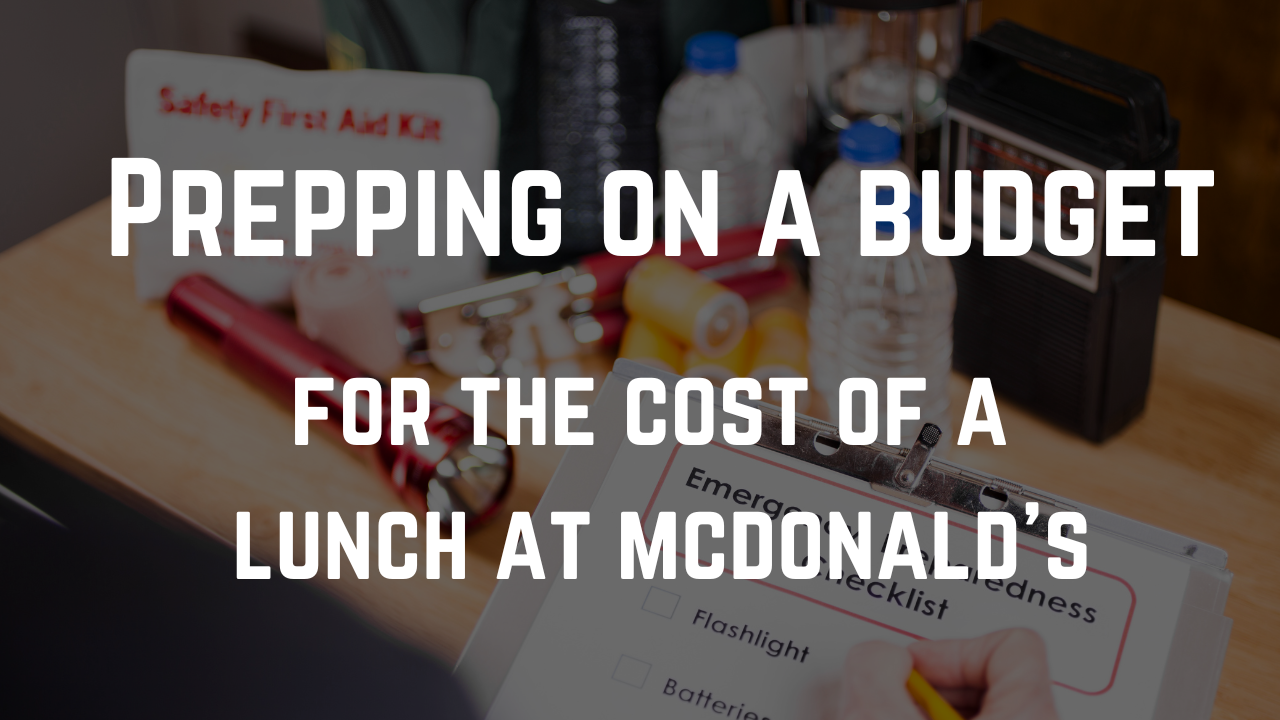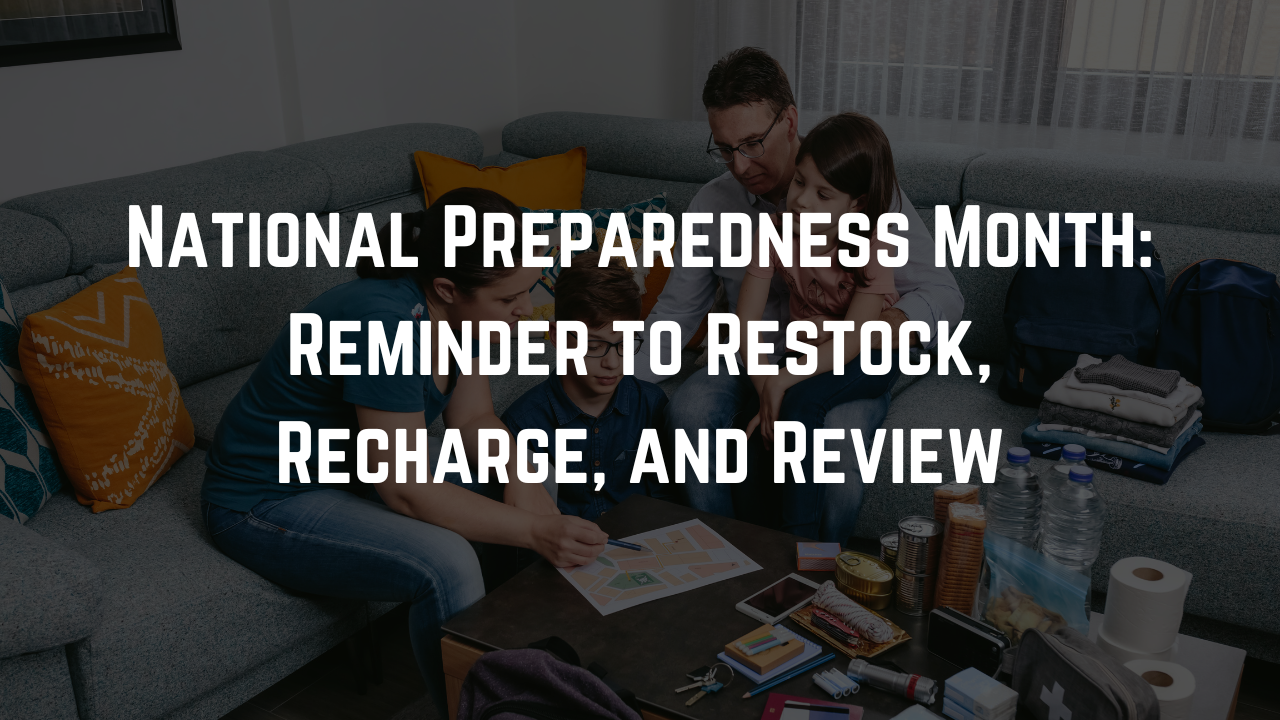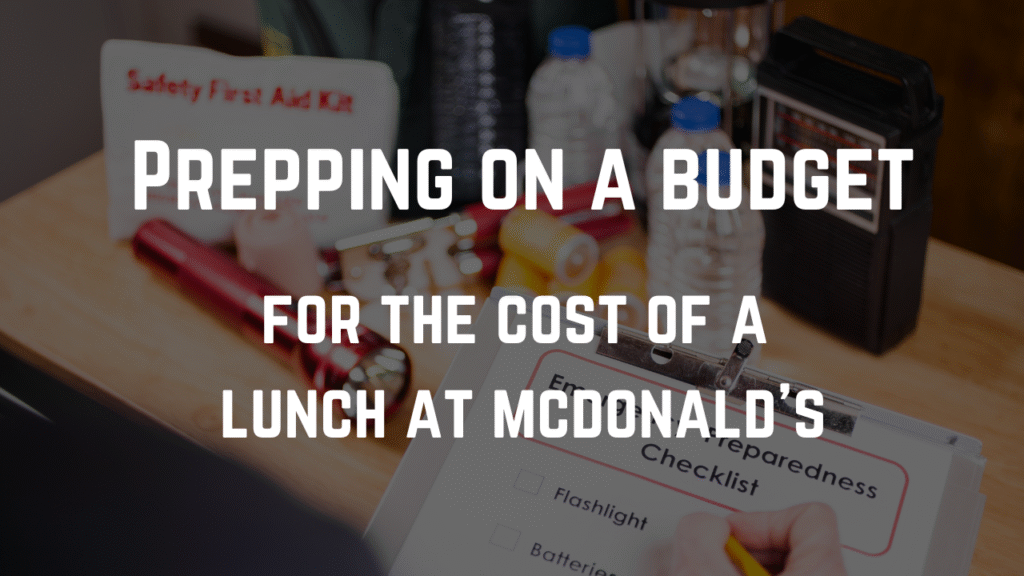
We’re excited to have Preston back for another insightful guest contribution!

By Preston I.
Preparedness expert with over 40 years of survival experience in Scouting, military service, survival training, and community leadership.
Prepping On A Budget With A Lunch At McDonald's
You don’t need to spend a lot on dehydrated packaged foods to build a substantial food store. While it can save time and effort, you can save money by investing a bit more time and effort.
Everything you need for a complete food storage program can be found at your local grocer, other local businesses, and discount warehouses.
Start With a Plan In Mind
Before spending a dime, sit down with paper and pen (or your favorite spreadsheet) and ask yourself a few key questions:
- Why are you storing food? Think about the kinds of emergencies that could disrupt your supply chain—storms, job loss, illness, or larger disruptions.
- How long do you want to prepare for? A week? Three months? A year?
- Who are you storing for? Adults and children have different calorie needs. Experts recommend about 2,200 calories per day for men, 2,000 for women, and 1,800 for children.
Ideally, everyone who will rely on the food storage should be part of this conversation. Getting family or household members involved not only spreads responsibility but also ensures that preferences, allergies, and dietary needs are accounted for. If that’s not possible, one responsible person can manage the planning, but collaboration builds buy-in and motivation.
Motivation matters. Having a clear “why” behind your food storage helps you stay consistent and focused.
Figure Out How You'll Pay For It
One of the biggest hurdles people face when starting food storage is cost. It feels overwhelming to think about buying a year’s worth of supplies all at once. That’s why I use what I call the “Lunch at McDonald’s” method.
Instead of dropping hundreds of dollars upfront, you simply set aside $20 each week—about the price of lunch for two at a fast-food restaurant. Treat this $20 like a bill you owe yourself: put it in a jar, cup, or separate account before paying anything else.
By doing this consistently, you make preparedness a priority without needing to justify whether you can “afford it” later.
Here’s how it works:
- Each week, take $20 and buy the specific items outlined in the plan.
- Some weeks won’t use the full $20—set the extra aside.
- Other weeks will cost more than $20—use your savings from lighter weeks to cover the difference.
- A few weeks may not require purchases at all. Still set the money aside; it will come in handy for future bulk buys.
How Seasoned Preppers Do It
Let’s examine what some diehard Preppers recommend. To be a member of The Church of Jesus Christ of Latter-day Saints (Mormons), it is highly recommended that each member have a minimum of three months’ storage and up to a year’s “put away” for each family member.
Let’s look at LDS recommendations for one year for one person:

This truly is a minimalistic diet with little variety but it is considered their lowest option for a year. The purchases I suggest below offer a diverse range.
The LDS Preparation Manual offers practical prepping advice alongside its religious content. Although I’m not a member, I respect their approach to food storage.
They also sell #10 cans of dehydrated bulk food at reasonable prices. I have many. Below is review of 15 of their bulk foods.
An Unexpected Source for Affordable Bulk Staples
LDS operates Home Storage Centers in multiple states, offering a variety of bulk foods at stated prices. As non-profit organizations, their price mark-ups are typically lower than traditional stores, which often use a keystone markup principle of 50%.
This link provides information about their locations, prices, and online store. This is what a Home Storage Center typically looks like:
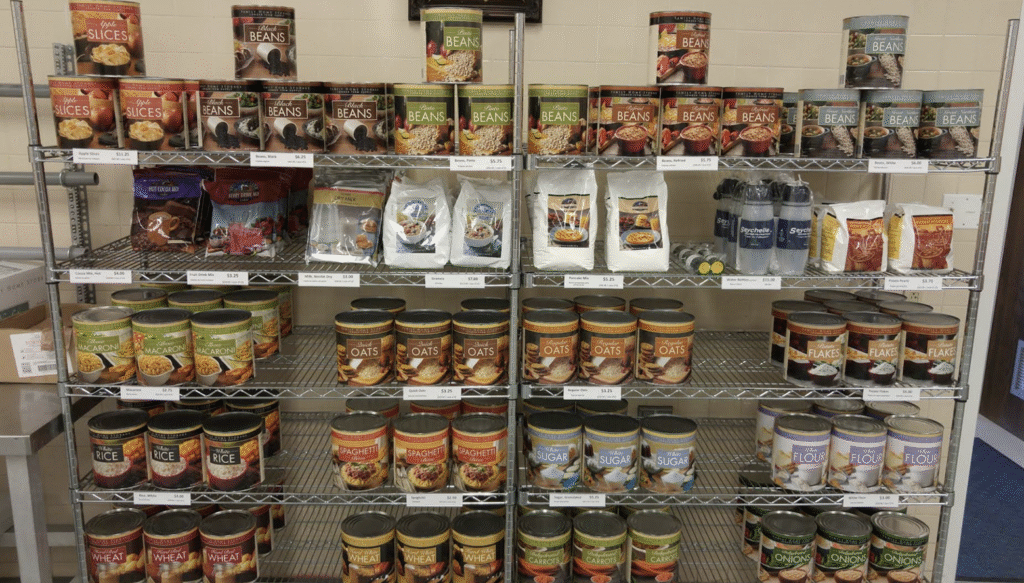
Make the $20 Plan Work For You
The plan is designed for two people; however, you can add another $20 per week for each additional pair. Shop sales whenever possible and adjust purchases as needed. Some weeks will cost less—save the extra. Other weeks may cost more—use your savings or treat it like a flexible petty cash account.
Also, don’t forget water. Aim to purchase a five-gallon carboy regularly for each person, which most grocery stores carry.
To stretch your budget, look for sales and BOGO promotions, and consider discount retailers like Costco, Sam’s Club, Dollar Tree, or Family Dollar. Along with food, set aside space for essential non-food items like soap, vitamins, and basic hygiene products. Candles and other extras can be added separately. Rice can also be swapped in for part of the wheat supply.
Weekly Plan for One Year
Week 1: 2 cans tuna, 2 containers salt, 1 pound of yeast
Week 2: 5 boxes macaroni and cheese, 4 cans greens
Week 3: 3 cans mushroom soup, 2 pounds of peanut butter, 5 cans beans
Week 4: 1 bottle multi-vitamins (the ones for adults), 5 cans beans
Week 5: 4 cans tomato soup, 6 pounds powdered milk
Week 6: 1 bottle aspirin (500 tablets), 3 bars of soap, 5 cans beans
Week 7: 100 pounds wheat/rice (LDS has reasonable prices)-borrow
Week 8: 5 pounds powdered milk, 3 bars of soap
Week 9: 5 pounds honey
Week 10: 4 cans tuna, 4 boxes macaroni and cheese, 1 pound yeast, 2 cans of Spam
Week 11: 10 pounds sugar, 2 containers salt
Week 12: 4 cans mushroom soup, 2 pounds shortening (Crisco has a longer shelf life)
Week 13: 1 bottle multi-vitamins (the ones for adults), 5 cans of Spam
Week 14: 100 pounds wheat/rice (LDS has reasonable prices)-borrow
Week 15: 1 box macaroni and cheese, 1 pound of yeast, 3 cans of Spam
Week 16: 5 pounds honey
Week 17: 2 cans tuna, 4 cans tomato soup, 3 bottles dish detergent
Week 18: 6 cans of Spam
Week 19: 100 pounds wheat/rice (LDS has reasonable prices)-borrow
Week 20: 20 pounds sugar
Week 21: 6 pounds powdered milk
Week 22: 1 can mushroom soup, 10 pounds sugar
Week 23: 1 can tuna, 4 cans tomato soup, 10 pounds sugar
Week 24: 10 pounds sugar, 4 cans Spam
Week 25: 2 can tuna, 2 cans mushroom soup, 2 pounds shortening
Week 26: 100 pounds wheat/rice (LDS has reasonable prices)-borrow
Week 27: 10 pounds sugar, 1 pound yeast
Week 28: 100 pounds wheat/rice (LDS has reasonable prices)-borrow
Week 29: 10 pounds powdered milk
Week 30: 20 pounds sugar
Week 31: 1 can tuna, 3 cans mushroom soup, 4 cans Spam
Week 32: 1 can tuna, 4 cans tomato soup, 2 pounds shortening
Week 33: Replenish funds—make up borrow amounts
Week 34: 2 cans tuna, 1 container salt, 2 jars coconut oil (stores better than other oils)
Week 35: 6 pounds powdered milk, 4 cans beans
Week 36: 20 pounds sugar
Week 37: 4 cans tomato soup, 2 jars coconut oil
Week 38: 2 cans tomato soup, 4 cans mushroom sou, 3 cans Spam
Week 39: 100 pounds wheat/rice (LDS has reasonable prices)-borrow
Week 40: 10 pounds powdered milk
Week 41: 5 cans beans, 4 cans Spam
Week 42: 100 pounds wheat/rice (LDS has reasonable prices)-borrow
Week 43: 4 pounds Tang
Week 44: : 5 cans greens, 4 cans Spam
Week 45: 100 pounds wheat/rice (LDS has reasonable prices)-borrow
Week 46: 4 cans tomato soup, 5 cans greens
Week 47: 2 cans tuna, 4 cans tomato soup, 3 bottles dish detergent
Week 48: 4 cans mushroom soup, 4 cans greens
Week 49: 4 pounds Tang
Week 50: 7 cans mushroom soup, 4 bars soap
Week 51: 5 cans beans, 4 cans Spam
Week 52: Replenish funds—make up borrow amounts
Storage & Personalization
You can adjust your supplies as needed. I mainly store dehydrated foods for their long shelf life, but rotating any food works well. Canned goods are safe past their expiration date, although they may lose some of their nutritional value and flavour.
My storeroom is a spare bedroom where I control temperature and humidity. Temperature and humidity have a direct impact on how your stores age.
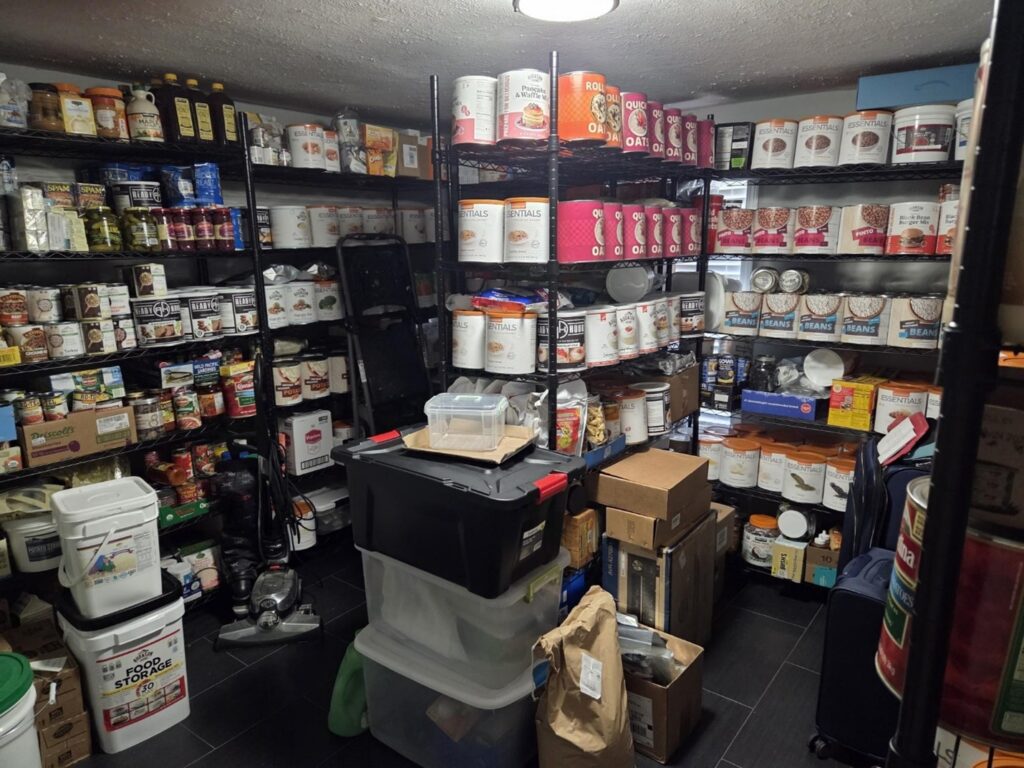
Final Thoughts
Preparedness doesn’t have to be complicated, or expensive. By setting aside just $20 a week, you can gradually build a reliable food storage plan that will sustain your household through a wide range of challenges.
The key is consistency: treat your $20 contribution as non-negotiable, and let small, steady actions add up over time.
Remember that your plan should reflect the needs and preferences of the people who will rely on it. Rotate items, shop smart, and adjust based on sales or substitutions like rice for wheat. Along the way, don’t forget the basics beyond food: water, vitamins, and hygiene items are equally critical to comfort and health.
Happy prepping, and here’s to building peace of mind one $20 week at a time!
